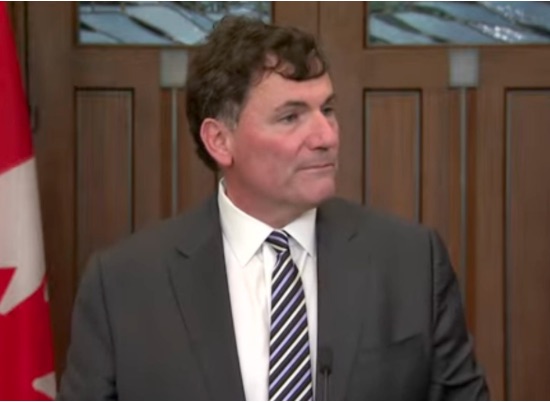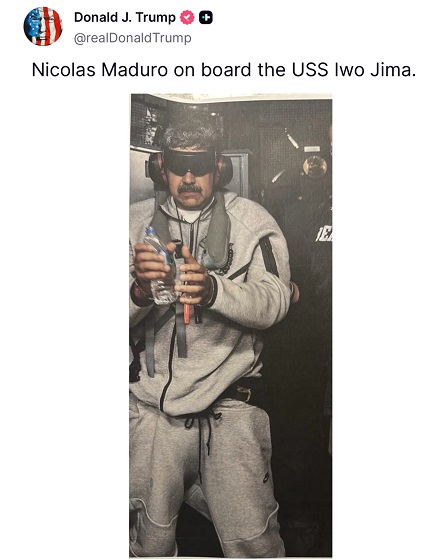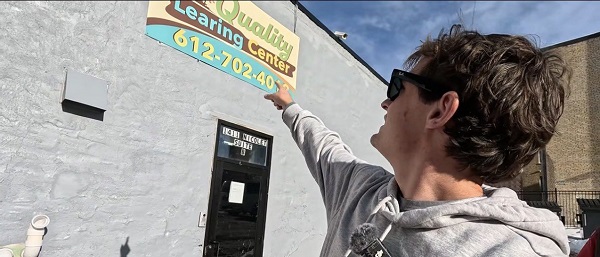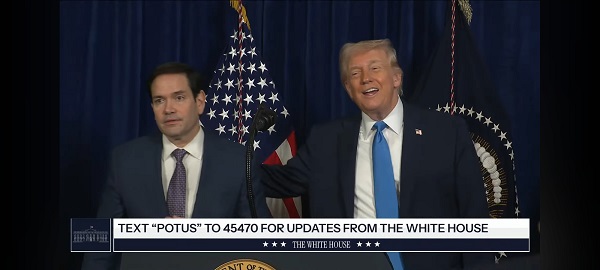Opinion
Ostriches on the runway

|
|
Dominic LeBlanc says it’s time to rise above partisanship. Watch the skies
“The protection of our democracy demands that we rise above partisanship,” Dominic LeBlanc told reporters Saturday morning in the lobby of the West Block’s backup House of Commons. “Canada isn’t the only country facing the threat of foreign interference. Many of our allies are, even now, having discussions on ways to protect their democracies against this scourge. If they can have reasoned and constructive discussions on this subject, Canada should be able to do the same. That’s why the prime minister tasked me [on Friday] with consulting, over the coming days, experts, legal scholars and opposition parties on what the next steps should look like — and determine who best may be suited to lead this public work.”
You can tell the Trudeau government is really badly rattled when it starts doing what it should have done in the first place. “Consulting experts, legal scholars and opposition parties” was an option in March, when Trudeau decided instead to lay the foundation for Friday’s debacle. Talking to people — in the old-fashioned sense of (a) showing the slightest interest in what they have to say and (b) allowing it to inflect your actions in any perceptible way — is always an option. Nor is it in any danger of getting worn out through overuse, where this government is concerned.
Paul Wells is a reader-supported publication. To receive new posts and support my work, consider becoming a free or paid subscriber.
“It’s our government’s hope that the opposition parties will treat this issue with the seriousness it deserves,” said LeBlanc, whose boss ignored a string of reports from the National Security and Intelligence Committee of Parliamentarians and whose early-warning system for news of Beijing’s intimidation against a sitting MP was named Fife and Chase.
LeBlanc opened the floor to questions. The first: Shouldn’t there be a public inquiry? “A public inquiry has never been off the table,” he said. “All options remain on the table.” This was change masquerading as continuity. Johnston took a public inquiry off the table three weeks ago. Trudeau accepted the un-tabling. By putting it back on the table, LeBlanc was bowing to what may be the inevitable conclusion of the last few days: that the opposition parties, by adapting a common line in favour of a full inquiry, may have made one inevitable.
Another characteristic of this government is that it views its tribulations as tests of other people. The short odyssey of David Johnston, in other words, is a learning opportunity for us all. “My job,” LeBlanc said, “is to, in the very next few days, in short order, ask opposition leaders to take this matter seriously. Not just to simply say, ‘Oh, there has to be a public inquiry.’ OK: Make suggestions about who could lead this public inquiry. What would the terms of reference be? What do they see as the timelines? How do they deal with the obvious challenge of respecting Canadian law that protects some of the most sensitive intelligence information?”
I should say I take LeBlanc at his word when he claims to be seeking input in good faith. As a general rule, his arrival tends to mark an improvement in this government’s handling of a difficult file. But just to be on the safe side, it’s worth saying some obvious things clearly.
The opposition parties should give input when asked. It’s useful for each of them to go through the exercise of conceiving in detail the proper handling of the election-interference file. And it’s good of the government to ask, albeit way later than it should have.
But everything LeBlanc plans to ask them — whether to have an inquiry, who should lead it, its mandate and deadlines and legal justification — remains the responsibility of the government. If the opposition parties chicken out, or play dumb games, or deadlock, or suggest people who decline to participate, the responsibility for designing a workable policy remains the government’s. I’m pretty sure Trudeau volunteered for the job of prime minister. In fact I’m sure there was something in the papers about it. He is in this fix now because he wanted Johnston to make his decisions for him. As I wrote nearly three months ago.
Thank you for reading Paul Wells. This post is public so feel free to share it.
LeBlanc kept saying an inquiry should be run by someone “eminent.” I mean…sure? Whatever? I suppose eminence shouldn’t be actively disqualifying, at least. But to me the craving for eminence is a strange instinct. Eminence is distinctly relative: I suspect more than half of Canadians could never, at any point, have told you who David Johnston is, or Julie Payette, or Craig Kielburger. I’ve come to suspect that “eminent” translates as “impressive to Katie Telford,” which is fine but, again, an odd criterion. Instead may I propose “competent”?
When I wrote about Johnston’s appointment in March, I a suggested a few alternative candidates for the job of deciding how to respond to the mandate for which I already thought Johnston was ill-suited. My list was concocted at random on a few minutes’ notice, with varying degrees of enthusiasm, purely for illustrative purposes. I could come up with a dozen other names, and I don’t even know what I’m talking about. If I were burdened in LeBlanc’s place with such a task, I’d begin by asking for a list of associate deputy ministers at the departments of Global Affairs and Justice, as well as a list of currently serving and recently retired ambassadors. Probably the guy who used to be the national director of the Liberal Party of Canada would be a bad idea, I guess I need to add.
I also might do some reading. I’d recall that when the lawyer Kenneth Feinberg was brought in to decide compensation for families of the 9/11 victims in the U.S., he couldn’t have been further from a household name. When James B. Donovan got Francis Gary Powers released by the Soviets, or Jean Monnet invented the European Union, or Elissa Golberg became Canada’s first civilian representative in Kandahar, they weren’t household names. They still aren’t. They were just good at their work. You know that uncomfortable suspicion that Canada is just six pals from the McGill alumni club who gather every Friday to carve up the spoils of elite consensus over pitchers of iced tea on the verandah of the Royal Ottawa Golf Club? The first step toward perpetuating that suspicion is the urge to find “eminent” people for technical work.
The title of today’s post is cryptic. When LeBlanc said our democracy depends on rising above partisanship, I thought, Uh-oh, and I started thinking about objects or creatures that don’t normally rise above much. Which led to a mental image of ostriches trying to fly. I actually have seen non-partisanship, many times, including from some of the most partisan operators in Canadian politics. But I still wouldn’t bet on it happening in any particular case. The incentives run all the other way. To insulate against it, politicians might want to read the latest from Alliance Canada Hong Kong, the diaspora group that has been chronicling foreign interference for years, for whom the issue is not a fun partisan football and the prospect of testifying yet again, to educate some eminent commissioner, is not appealing.
I keep saying the under-served constituency in this country is the people who would like to see serious problems treated seriously. Not in the sense of cheap theatrics — furrowed brows, jabby index fingers, “my time is limited” — but in the sense of, you know, seriousness. It feels cheap to lodge such a complaint. It’s too easy, too timeless. OK, smartass, what are you proposing? I dunno, more, uh…. seriousness, I guess. But I think everyone senses it.
Last September, the CBC’s Aaron Wherry reported, Justin Trudeau told his caucus “to focus on four Cs: competence, confidence, contrast and campaign-readiness (in that order).” I’m left wondering how the prime minister defines competence and how he thinks he’s doing. This is a guy who, when he made those remarks, was less than a year past deciding that the biggest problem with his cabinet was that Marc Garneau was in it.
Meanwhile, I checked with Pierre Poilievre’s Twitter account to see whether he had responded to LeBlanc’s overture. Here’s how the Conservative leader spent his Friday afternoon:
I sometimes wonder whether these people know we can see them. It’s time to rise above partisanship. Flap, you big gorgeous birds! Flap!
For the full experience, upgrade your subscription to Paul Wells.
International
“History in the making”: Venezuelans in Florida flood streets after Maduro’s capture

Celebrations broke out across South Florida Saturday as news spread that Venezuela’s longtime socialist strongman Nicolás Maduro had been captured and removed from power, a moment many Venezuelan exiles said they had waited their entire lives to see. In Doral, hundreds gathered outside the El Arepazo restaurant before sunrise, waving flags, embracing strangers, and reacting emotionally to what they described as a turning point for their homeland. Local television footage captured chants, tears, and spontaneous celebrations as word filtered through the community that Maduro and his wife had been “captured and flown out of the country” following U.S. military action announced by Donald Trump earlier that morning.
Venezuelans gathered early this morning in Doral to celebrate after news broke that the U.S. had captured Nicolás Maduro🇻🇪| #ONLYinDADE pic.twitter.com/mSNaF3IhR3
— ONLY in DADE (@ONLYinDADE) January 3, 2026
One young man, Edgar, spoke directly to reporters as the crowd surged behind him, calling the moment “history in the making.” He said his family had spent decades telling him stories about a Venezuela that once had real elections and basic freedoms. “My chest feels like it’s going to explode with joy,” he said, explaining that the struggle against the regime began long before he was born. Edgar thanked President Trump for allowing Venezuelans to work and rebuild their lives in the United States, adding that now, for the first time, he believed they could take those skills back home.
Similar scenes played out beyond Florida. Video circulating online showed Venezuelans celebrating in Chile and other parts of Latin America, reflecting the regional impact of Maduro’s fall. The dictator had clung to power through what U.S. officials and international observers have long described as sham elections, while presiding over economic collapse, mass emigration, and deepening ties to transnational criminal networks. U.S. authorities have pursued him for years, placing a $50 million bounty on information leading to his arrest or conviction. Federal prosecutors accused Maduro in 2020 of being a central figure in the so-called Cartel of the Suns, an international cocaine trafficking operation allegedly run by senior members of the Venezuelan regime and aimed, in prosecutors’ words, at flooding the United States with drugs.
After the overnight strikes, Venezuela’s remaining regime figures declared a state of emergency, even as images of celebration dominated social media abroad. In Washington, reaction from Florida lawmakers was swift. Rep. Carlos Gimenez, who represents a district with large Venezuelan, Cuban, and Nicaraguan exile communities, compared Maduro’s capture to one of the defining moments of the 20th century. “President Trump has changed the course of history in our hemisphere,” Gimenez wrote, calling the operation “this hemisphere’s equivalent to the Fall of the Berlin Wall.” He added that South Florida’s exile communities were “overwhelmed with emotion and hope,” and thanked U.S. service members for what he described as a decisive and successful mission.
For many gathered in Doral, the reaction was deeply personal. A CBS Miami reporter relayed comments from attendees who said they now felt safer about the possibility of returning to Venezuela to see family members they had not hugged in years. One man described it as the end of “26 years of waiting” for a free country, saying the moment felt less like politics and more like the closing of a long, painful chapter.
U.S. Attorney General Pam Bondi confirmed Saturday that Maduro and his wife have been formally indicted in the Southern District of New York. Bondi said the charges include narco-terrorism conspiracy, cocaine importation conspiracy, and weapons offenses involving machine guns and destructive devices. For Venezuelan Americans packed into South Florida streets, those legal details mattered less than the symbolism. After years of watching their country unravel from afar, many said they finally felt something unfamiliar when they looked south — relief, and the cautious hope that Venezuela’s future might no longer be written by a dictator.
Opinion
Hell freezes over, CTV’s fabrication of fake news and our 2026 forecast is still searching for sunshine

Plus! Politico warns that the far right’s stealing Christmas, a CBC content analysis ruffles feathers and more! Happy New Year
Last week, according to the people who produce the nation’s most popular newscast, the hell that is Gaza froze over.
That’s right. According to CTV News, “freezing” rain flooded Gaza camps, leaving “displaced Palestinians in dire conditions.” This, as was pointed out by social media critics (including the National Post’s Chris Selley) was an absolutely false statement. It was, to be clear, a lie.
The Rewrite is a dedicated to saving journalism from its worst instincts.
Please support us with a free or paid subscription
Winter rains had indeed fallen and made life unpleasant for people in Gaza. But the Associated Press (AP) report for which some eager beaver wrote the headline (one is tempted to suspect either a social justice warrior posing as a journalist or a bumbling incompetent produced by J-school) made no mention of anything “freezing.” Of course it didn’t, because on the day the story was published the high temperature in Gaza was 17C with a low of 13C.
Now, as one who has visited Disneyland in January, I am aware that temperatures can be relative. When it’s 14C in southern California, people from Saskatoon and Winnipeg are jumping into the local hotel pools while “cast members” at Disneyland are wearing toques and mittens. So AP was entirely within its rights to refer to conditions as chilly.
CTV Evening News, historically, has been one of Canada’s most watched regularly scheduled programs. It has boasted in the past about being the nation’s “most trusted” newscast.
So it was bad enough that CTV posted a barefaced falsehood. What was worse, although it did soften its internal headline to refer to “winter” rains, was that it did not take down its “freezing” posts or offer any hint of regret – at least none I could find – that it had ever posted information that amounted to the antithesis of journalism’s first obligation – The Truth.
While CTV’s owner, Bell, continues to lobby for its newsrooms to qualify for government subsidies such as the Journalism Labour Tax Credit and campaign in Canadian Radio-television and Telecommunications Commission (CRTC) hearings for newsroom funding, it does not appear super interested in investing in good journalism or even maintaining public trust in it.
Which is a shame, because last week its presentation of fake news did significant harm to trust in the craft and was inconsistent with its published standards.
Peter Stockland did a fine job the other day in addressing the fuss raised in media concerning CBS editor-in-chief Bari Weiss’s decision to pull back a story regarding US deportees because, she said, it wasn’t complete enough for airing on 60 Minutes. Others viewed it more suspiciously.
If you haven’t read it yet, please do. We’ll see how it all turns out but what caught my eye was the manner in which the Globe and Mail’s U.S. correspondent, Adrian Morrow, chose to describe Weiss. He portrayed her only as “an anti-woke media personality” – a term of which his editors apparently approved. Given that Weiss was the Opinion Editor of the Wall Street Journal and then the New York Times, this seems a little, shall we say, catty? A childishly nasty manner in which to refer to Weiss, I thought, considering she also launched an online publication – The Free Press – that, because she was good at being an editor, used talented journalists and paid them well, recently sold to Paramount Skydance for more than $200 million.
Most of all, though, I found the reference entirely unnecessary and self-indulgent, as if the piece was written for the approval of peers and not for the benefit of readers.
Unsubstantiated references to the “far right” continue to be in prolific use as we begin a New Year, still searching for reasons to be optimistic about the state of journalism. References to the “far left,” meanwhile, continue to defy Newton’s Third Law of Motion concerning equal and opposite actions.
The European edition of Politico used no less an occasion that the birth of the previous millenium’s most influential figure to weigh in with its report on “How the far right stole Christmas.”
“U.S. President Donald Trump claims to have “brought back” the phrase “Merry Christmas” in the United States,” Politico declared, “framing it as defiance against political correctness. Now, European far-right parties more usually focused on immigration or law-and-order concerns have adopted similar language, recasting Christmas as the latest battleground in a broader struggle over culture.”
Whew. Politico, focusing on Italian leader Giorgia Meloni, went so far as to quote attendees at a Christmas celebration who wished to remain anonymous for fear of being associated with a “far right” event.
Me? I thought it was Karl Marx, father of the far left, who labeled religion the “opium of the masses” and a human creation designed to keep the working classes oppressed. And weren’t the Soviet Union, China, North Korea and other Communist states the ones that did and do their level best to “steal” Christmas and other festivities founded in faith? Times have clearly changed, even if some newsroom instincts have not.
Speaking of disconnected media, prolific numbers man David Clinton has ruffled a few feathers with an extensive analysis in his Substack platform, The Audit, of CBC content. Here’s his summary of what he found:
“Of the 300 stories covered by my data, around 30 per cent – month after month – focused on Donald Trump and U.S.- Canada relations. Another 12-15 percent related to Gaza and the Israel-Palestine conflict. Domestic politics – including election coverage – took up another 12 percent, Indigenous issues attracted 9 percent, climate and the environment grabbed 8 percent, and gender identity, health-care worker assaults, immigrant suffering, and crime attracted around 4 percent each.”
Clinton provides a list of topics that were not “meaningfully represented in my sample of CBC’s Top Stories.” It includes housing affordability, immigration levels, crime rate, private sector investment success stories, the oil and gas sector, Chinese interference, etc. You can read his full analysis here.
You can also look for my New Year’s predictions on media that (spoiler alert) states that seeing as there has been no evidence of reform in CBC President Marie-Philippe Bouchard’s first year at the helm of the Mother Corp, you can expect more of the same nothing in 2026. That piece is expected to appear in The Hub this week.
Western Standard announced before Christmas that it’s heading East and hiring a reporter to cover news emanating from Queen’s Park, Ontario’s provincial legislature.
The most notable media-on-media smackdown that came to my attention over the festive season goes to the reliably rambunctious Ezra Levant of Rebel News.
Seizing on a year-end column by the Globe and Mail’s Lawrence Martin that hailed 2025 “as one of Canada’s great nation-building years” under Prime Minister Mark Carney, Levant had this to say:
|
And that, for this week, is that. Welcome to 2026.
(Peter Menzies is a commentator and consultant on media, Macdonald-Laurier Institute Senior Fellow, a past publisher of the Calgary Herald, a former vice chair of the CRTC and a National Newspaper Award winner.)
Invite your friends and earn rewards
-

 International2 days ago
International2 days ago“Captured and flown out”: Trump announces dramatic capture of Maduro
-

 International2 days ago
International2 days agoTrump Says U.S. Strike Captured Nicolás Maduro and Wife Cilia Flores; Bondi Says Couple Possessed Machine Guns
-

 Energy1 day ago
Energy1 day agoThe U.S. Just Removed a Dictator and Canada is Collateral Damage
-

 International1 day ago
International1 day agoUS Justice Department Accusing Maduro’s Inner Circle of a Narco-State Conspiracy
-

 Haultain Research1 day ago
Haultain Research1 day agoTrying to Defend Maduro’s Legitimacy
-

 Business2 days ago
Business2 days agoVacant Somali Daycares In Viral Videos Are Also Linked To $300 Million ‘Feeding Our Future’ Fraud
-

 Daily Caller22 hours ago
Daily Caller22 hours agoTrump Says US Going To Run Venezuela After Nabbing Maduro
-

 International1 day ago
International1 day agoU.S. Claims Western Hemispheric Domination, Denies Russia Security Interests On Its Own Border









